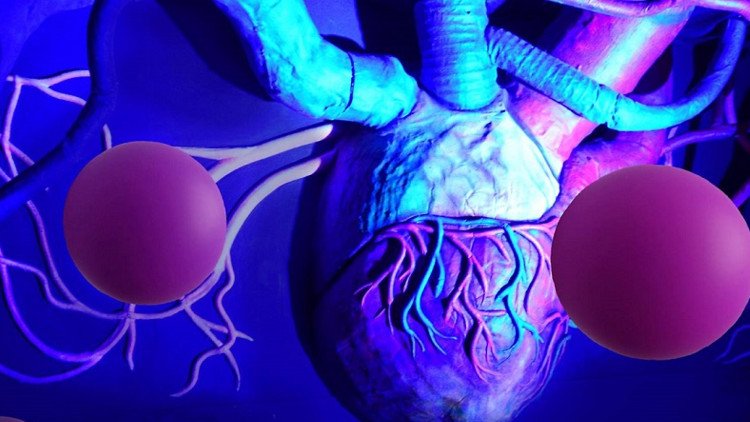The largest part of the body, never known in the human body
A group of American scientists said they found a new part that could be the largest in the human body - a finding that could alter the long-standing perceptions of human anatomy as well as openness. Metastatic cancer treatment solution.
The finding was published by the team, led by scientists at New York University School of Medicine, in Scientific Reports on March 27.
Called interstitium , the aforementioned new body is a network of gaps filled with fluid that lies inside the tissues throughout the human body.
The research team notes that detection of interstitium may be the key to finding effective treatments for diseases like cancer.
According to Reuters news agency, in the journal, the team said, interstitium can be found beneath the skin and between organs in the body; It surrounds strong blood, muscles, digestive and urinary apparatus, in a class that has long been thought to be a strong connective tissue.

Illustrations inside the human body.(Photo: Singapore Science Center).
"In terms of scale, we're talking about about 20% of the body's liquid, which is the space that makes up this largest body part. It's about 10 liters of liquid," said Dr. Neil Theise, Research team member and professor of pathology at New York University, said.
The team also revealed that interstitium has hidden behind the conventional view of the scientific community for decades and was only discovered by chance.
In 2015, two scientists Petros Benias and David Carr-Locke - then working at Mount Sinai Beth Medical Center in New York, were looking at a patient's gallbladder for signs of cancer. They use a new technique called confocal laser endomicroscopy, which allows a very thorough examination of living tissue. A built-in spotlight is attached to a small camera, which functions as a microscope, searching inside the human body. But instead of seeing the dense connective tissue as scientists still call for a long time, what they see again is the unprecedented holes in human anatomy. They asked Dr. Theise for help, then a colleague at Mount Sinai Hospital.
"What we see is open, fluid-filled spaces , like a lattice of collages of these collagen bundles," Dr. Theise recalls.
The team found that the interstitium division was discovered because they were looking for living tissue instead of dead tissue used in conventional medical positives. Traditionally, to create positive plates, scientists used chemically "prepared" tissue, which drains the fluid, thus destroying the interstitium.
"A layer of collagen packs sits on each gap and it looks like a wall of collagen," Mr. Theise explained. The liquid is rich in protein, flowing into the lymphatic system - the network of lymphatic vessels. , which is a fluid that contains white blood cells that help the body fight off disease.
This allows to explain how the binding fluids spread cancer cells throughout the body during metastasis. However, understanding interstitium also helps researchers find therapies to cope with this incurable disease.
In the future, deeper understanding of interstitium may help slow or prevent cancer metastasis, as well as open up solutions for many other areas, Dr. Theise said.
- As the largest organ and the one that helps us survive, how is the skin made up?
- Which part of the human body is 'useless'?
- The secret of a single part of the body never
- Amazing discovery of the human body
- A part of the body, not injured, doesn't bleed, you know?
- Strange mysteries about 10 human body parts
- Discover people through X-ray
- See the changes of each body part after we die
- New findings: Air pollution affects every part of the body, not just the lungs
- New discoveries about the human body (Part 2)
- Check the harmful effects of alcohol on each part of the body
- 10 interesting things about human skin
 Green tea cleans teeth better than mouthwash?
Green tea cleans teeth better than mouthwash? Death kiss: This is why you should not let anyone kiss your baby's lips
Death kiss: This is why you should not let anyone kiss your baby's lips What is salmonellosis?
What is salmonellosis? Caution should be exercised when using aloe vera through eating and drinking
Caution should be exercised when using aloe vera through eating and drinking